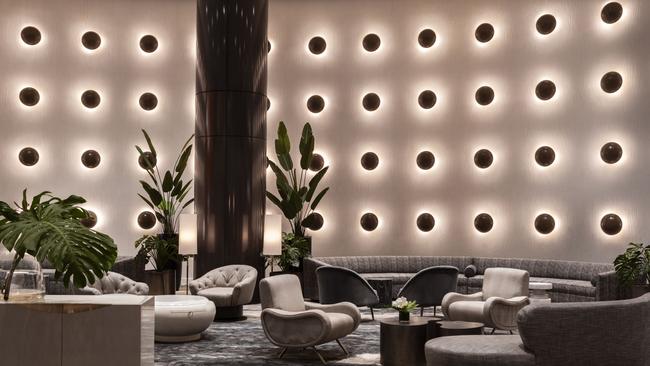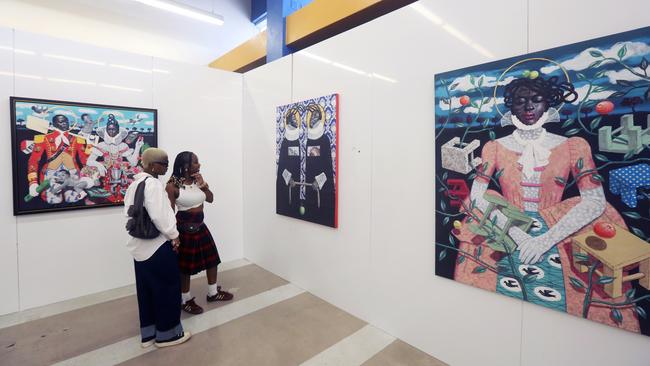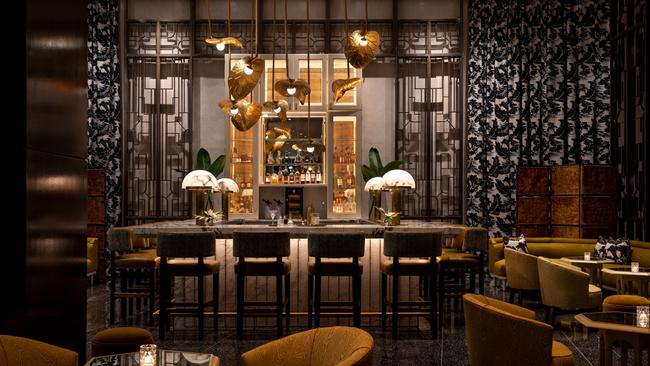How Miami went from retirement village to hot spot
Once deemed a cultural wasteland, the Florida city is now a hub of arts, food and architecture. Here is what to do and where to visit.

For decades, Miami Beach was derided as a cultural wasteland, a backwater escape for American retirees, low-budget package tourists, vacuous sun-worshippers and preening bodybuilders.
I realise how much this has changed about an hour after I arrive and check into the Ritz-Carlton, South Beach, the former DiLido resort, a stylish Jet Age classic from 1953 that has been so lovingly preserved I expect to spot Don Draper sipping a fruit cocktail in the lobby bar.

After strolling past the poolside sushi and taco eateries to the beach’s lapping green waters, I lay down my towel on the sand to discover I am next to an old friend from New York – Camille Jeanjean, a director of the cultural services department of the French Embassy in Manhattan.
“But of course it’s no coincidence,” Jeanjean declares. “The whole New York art world is in Miami this week.” She proceeds to list a string of gallerists and artists she has run into that morning.
In the past two decades, Miami has become a surprise cultural destination, with an array of fine contemporary art museums and galleries open year-round.
I am visiting in December, when the city is host to one of the world’s most extravagant art fairs, Art Basel Miami, which lures thousands of art lovers from around the world and pushes the city’s sun-dappled artistic life into overdrive. The fair began in 2002 and is now so popular it has expanded into Miami Art Week, with dozens of satellite venues.

Jeanjean reels off a dizzying schedule of openings and parties being held that night, which are free to those in the know.
By dusk, we’re at a reception in the elegant Saxony Bar of the Faena Hotel, an over-the-top resort owned by Argentine fashion icon Alan Faena, hosted by a beloved Italian wine label, Ruffino.
At 8pm, we dash upstairs to the palm-filled courtyard for the official launch of Art Basel, held near a giant golden skeleton of a mammoth by Damian Hirst (titled Gone But Not Forgotten) and a satirical sculpture, Battle of the Corporate Nations, with billionaire Jeff Bezos on horseback battling Elon Musk and Mark Zuckerberg, all in ancient Greek garb.
The gathering had been billed as a dinner, but in what I soon learn is classic Miami fashion, there is no actual food, just endless supplies of Veuve Clicquot. Nobody seems to be complaining.

Wearing a white wide-brimmed hat, Faena drops by the fiesta with his wife, Grace Goldsmith. “It’s impossible to see everything this week,” he tells me. “But Miami is an art destination at any time of year. You can always come back when it’s calm.”
Nobody is slowing down tonight. The after-party is hosted by the chichi London-based gallery White Cube in a beach tent at Soho Beach House, the Miami wing of the international private club Soho House, with the British afro-beat group Ezra Collective playing. There’s more music, more art, more champagne.
As I wander back at 3am to the Ritz-Carlton, I realise it’s only my first night at Art Week and I’m exhausted.

It might seem perverse for Australians to travel halfway around the world to visit a beach. But Miami Beach is not just any stretch of sand. Its 15km length has an eccentric history, style and character all its own, and these days it feels a world apart from the rest of the US.
This isolation is born from a geographical reality, as I discover when I fly in and see from the air that Miami Beach is actually a cigar-shaped barrier island connected to mainland Florida by two causeways.
In fact, it has been its own independent city separate from Miami since 1917. It has even been Balkanised into provinces – the rowdy, club-filled Art Deco world of South Beach; sedate North Beach; and the in-between Mid-Beach, all connected by an oceanfront bike trail. I spring for the $US35 month-long Citibike pass, even though I am only here for five days. The bike-share App system is creaky but allows me to speed up and down the shorefront and avoid traffic snarls.

Miami Beach today is so wealthy and successful that one local writer has dubbed it the Billion Dollar Sandbar. But it has gone through many ups and downs in popularity, as a self-guided bike tour reveals.
In the early 1900s, it was a crocodile-infested mangrove swamp overhung by palmetto scrub when Carl Fisher, a mogul from the chilly northeast, spent millions to drain it as a real estate venture. Its first golden age came in the 1920s, when the famous Art Deco hotels painted tutti-frutti colours sprouted on Ocean Ave, each with its illegal casino and speakeasy. It was a tropical holiday scene that attracted gangsters such as Al Capone and Meyer Lansky.
That boom went bust in the ’30s when the Feds cracked down on crime. But a second golden age began in 1948 with the opening of several resorts in mid-century modern style, designed by the visionary architect Morris Lapidus. Their scale and grandeur were far more influential than Art Deco.

In the ’50s, Miami single-handedly invented modern surf-and-sand tourism thanks to cheap airfares and airconditioning, as well as the glamorous presence of Frank Sinatra and the Rat Pack. It is to admire the escapist legacy that I am staying at Lapidus’s first hotel, now the Ritz-Carlton, South Beach, which has interiors featuring curves and floating lobbies with a complete disdain for columns or straight lines.
Its counterpart in North Beach is the Fontainebleau Miami Beach, which opened in 1954 and featured in the James Bond flick Goldfinger, starring Sean Connery. Today, it’s justly renowned for its mosaic floor and enormous chandeliers.
The ’50s tourist boom collapsed again in the ’70, when Miami Beach became a haven for retirees and was dubbed “God’s Waiting Room”.

Plans were slated to tear down the then-shabby Art Deco district. Even its famous beach had eroded, so tourists could step out their hotel front doors and virtually jump off rocks into the ocean. Luckily, the Deco District was protected and the smash hit Miami Vice landed on TV, making the city cool again.
Golden sand was barged in from South Florida by the US Army Corps of Engineers, turning the beachfront into the spectacular stretch seen today. By the early 2000s, renovations of historical hotels were in full swing, matched by a demographic shift. Miami had been home of Cuban exiles since Castro’s 1959 revolution, but it became “the capital of Latin America”, filled with communities from every corner of Central and South America, and the Caribbean, kickstarting its cultural and gastronomic renaissance; immigrants from Europe and wealthy escapees from New York added to the mix.

This new energy is most obvious in South Beach. On my last night, I hit the cocktail happy hour at the avant-garde Mexican restaurant Serena in the neon-bathed Moxy South Beach Hotel and chow down on Oaxacan specialities such as Leche de Tigre (Tiger’s Milk), a ceviche with lime, mango and chilli.
Then I go casual and take a stool at the outdoor counter of La Sandwicherie, a classic since French chefs opened it in the ’80s. Its kitchens make what are regularly described as “the world’s best sandwiches”. I order The Tropical, a toasted baguette piled high with avocado, mozzarella, lettuce, tomatoes, cucumbers, papaya, mango, pineapple, hot peppers – like a vegetable buffet and fruit salad combined, all doused in their “secret” vinaigrette. World’s best? It’s certainly up there for $US10.
At 9pm, I stroll across the street to the beloved Mac’s Club Deuce, the oldest bar in Miami Beach, which opened as a speakeasy in 1926 at the peak of Prohibition. It’s an atmospheric dive bar, with pink and green neon signs glowing over a curved wooden bar.
And for a grand finale, I hit its Latino counterpart, Mango’s Tropical Cafe, a club with a spectacular late-night cabaret show of salsa dancers and big band music – a throwback to Havana in the ’50s. As I wander back along the sands to my hotel, again at 3am, I have to admit that few places do escapism as well as Miami Beach.
In the know
Miami Art Week runs December 2-8 this year.
The Ritz-Carlton, South Beach, has rooms from $US720 ($1085) a night.
If you love to travel, sign up to our free weekly Travel + Luxury newsletter here.




To join the conversation, please log in. Don't have an account? Register
Join the conversation, you are commenting as Logout